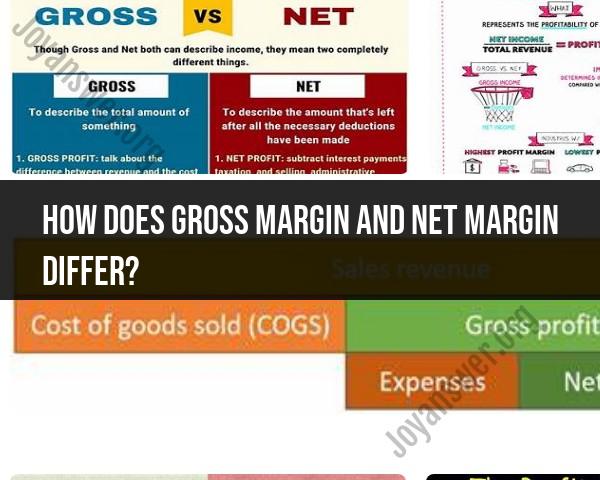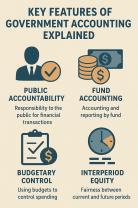How does gross margin and net margin differ?
Gross margin and net margin are both financial metrics that measure different aspects of a company's profitability. While they are related, they focus on different stages of the income statement and provide insights into different aspects of a company's operations. Here's a breakdown of the key differences between gross margin and net margin:
Gross Margin:
- Definition: Gross margin represents the percentage of revenue that exceeds the cost of goods sold (COGS). It measures the profitability of a company's core business activities.
- Calculation:
- Focus: It focuses solely on the direct costs associated with producing or purchasing the goods or services that a company sells. It does not include other operating expenses such as marketing, administrative costs, or interest.
Net Margin:
- Definition: Net margin, also known as profit margin or net profit margin, measures the percentage of revenue that remains as profit after deducting all operating expenses, taxes, interest, and other costs.
- Calculation:
- Focus: It provides a more comprehensive view of a company's overall profitability by considering all costs, including operating expenses, taxes, and interest. It reflects the percentage of revenue that ultimately contributes to net profit.
Key Differences:
Scope of Costs:
- Gross margin focuses on the direct costs associated with producing or purchasing goods (COGS).
- Net margin considers all costs, including operating expenses, taxes, interest, and other non-direct costs.
Stage of Income Statement:
- Gross margin is calculated above the gross profit line, reflecting profitability before operating expenses.
- Net margin is calculated below the gross profit line, representing profitability after all expenses.
Insights into Efficiency:
- Gross margin provides insights into the efficiency of a company's production or procurement processes.
- Net margin reflects the overall efficiency of a company's operations, including its ability to manage operating expenses and taxes.
Use Cases:
- Gross margin is often used in industries where production efficiency is a critical factor, such as manufacturing or retail.
- Net margin is more widely used as a key indicator of a company's overall profitability and financial health.
Both gross margin and net margin are important metrics for investors, analysts, and businesses to assess and compare profitability. They provide valuable insights into different aspects of a company's financial performance and help stakeholders make informed decisions about its operations and financial health.
How do gross margin and net margin differ in financial terms?
Gross margin and net margin are two crucial profitability metrics used in financial analysis, but they differ in terms of what they measure and how they're calculated:
Gross Margin:
- Measures: The percentage of revenue remaining after deducting the direct costs of producing goods or services (COGS).
- Focus: Assesses efficiency in managing production costs relative to revenue.
- Calculation: (Revenue - COGS) / Revenue x 100%
- Example: A company with $10,000 revenue and $6,000 COGS has a gross margin of 40% (10,000 - 6,000) / 10,000 x 100%).
Net Margin:
- Measures: The percentage of revenue remaining after accounting for ALL operating expenses, including COGS, administrative expenses, marketing costs, and other overhead costs.
- Focus: Provides a clearer picture of overall profitability by reflecting all expenses involved in generating revenue.
- Calculation: (Revenue - Total Operating Expenses) / Revenue x 100%
- Example: Using the same company with $10,000 revenue and $6,000 COGS, if its total operating expenses are $2,000, its net margin would be 20% ((10,000 - 6,000 - 2,000) / 10,000 x 100%).
Key Differences:
- Scope: Gross margin only considers cost of goods, while net margin considers all expenses.
- Interpretation: A higher gross margin indicates better control over production costs, while a higher net margin signifies overall profitability and efficiency in managing all expenses.
- Comparison: Companies within the same industry can be compared through gross margin, while net margin comparisons are more meaningful when considering companies with similar business models and operating expenses structures.
Understanding both gross and net margins is crucial for a comprehensive assessment of a company's financial health and its ability to generate profit.
I hope this explanation clarifies the differences between these two essential metrics. Feel free to ask if you have further questions!











